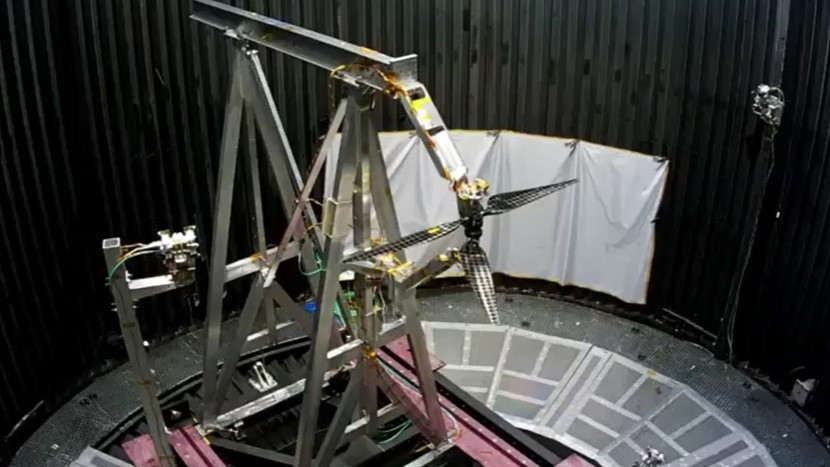
NASA recently released a video showing a pair of Mars helicopter rotor blades getting tested at the agency’s Jet Propulsion Laboratory (JPL). The test occurred on Sept. 15, just one day before NASA’s Ingenuity helicopter made a record-breaking flight on the Red Planet.
With Ingenuity’s major success, NASA is planning to incorporate helicopter-like drones into future Mars missions too, built with designs more robust than their predecessor — which has completed 66 flights, and counting. The new dual rotor system recently tested at JPL features two carbon-fiber blades measuring more than 50 inches (1.3 meters) in diameter. That's nearly 4 inches (10 centimeters) longer than Ingenuity’s are.

The rotors were tested inside JPL’s 25-Foot Space Simulator, a vacuum chamber used by NASA engineers to expose spacecraft systems to conditions similar to those they will face during a mission. The stainless-steel compartment spans 85 feet (26 meters) in height, and can simulate the conditions of extreme temperatures and solar radiation found in the vacuum of interplanetary space.
Related: Mars helicopter flies back-to-back to prep for 'solar conjunction' (video)
Over the course of three weeks, the dual rotors were spun at exponentially greater speeds to test their durability. A NASA video from inside the space simulation chamber shows a Sept. 15 test during which the blades are spun at Mach 0.95, which is nearly the speed of sound.
Coincidentally, Ingenuity completed a record-breaking flight just the next day. On Sept. 16, the Mars helicopter flew its 59th flight across the Martian surface, reaching an altitude of 66 feet (20 meters) — at the time, this marked its highest flight yet.
That record was broken during an Oct. 5 flight, however, during which Ingenuity flew to a height of 79 feet (24 meters).
Ingenuity landed on Mars with NASA’s Perseverance rover in Feb. 2021, and was originally intended to only fly five times in a proof-of-concept demonstration for this sort of flight technology. Now, on an extended mission, the helicopter has spent nearly 2 cumulative hours in the Martian air, and has flown across a total of 9 miles.
The Sept. 16 flight remains a significant milestone, and is notable for its occurrence alongside the terrestrial testing of its successor spacecraft components only the day before.
Ingenuity is a test vehicle itself, which has far surpassed its initial life expectancy — that NASA can execute near-simultaneous interplanetary flight tests of hardware in both simulated and off-world environments speaks immensely to humanity’s progress in space exploration as a whole.
It also undoubtedly highlights the space agency’s determination to continue innovation into the final frontier.







